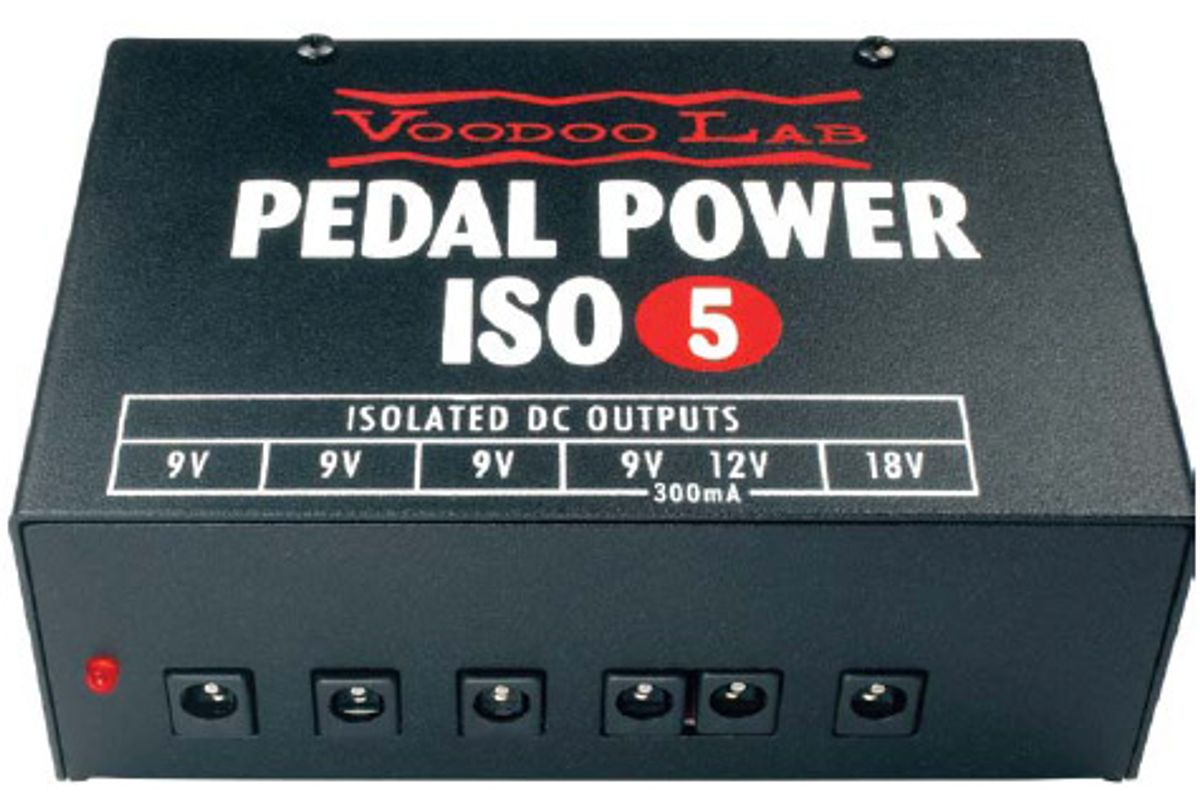
Power supply for small to medium rigs
Feel the Power
At the 2010 NAMM show, in Anaheim, California, Voodoo Lab unveiled their Pedal Power ISO-5. The little brother of Voodoo Lab’s Pedal Power 2 Plus, the ISO-5 is intended to power small to medium rigs.
The ISO-5’s dimensions are 9" x 3.4" x 1.8"—perfect to drop into a pedalboard or rack-mounted rig. It weighs in at 1.24 pounds and has a sturdy metal chassis that would hold up well against the inevitable and inadvertent foot stomping. And with its grey-black box and white-and-red labeling, this power supply looks pretty sharp.
The ISO-5 contains five isolated, regulated, and filtered outputs—three 9V, for pedals that run on 9-volt batteries and require 100 mA or less; a high-current 9V, for devices requiring up to 300 mA; a 12V, for those requiring 12 volts at 300 mA (or those that use an unregulated 9V adapter); and an 18V, for pedals requiring two 9-volt batteries, like the power-draining digital offerings of Eventide, Line 6, and TC Electronic. The ISO-5 includes enough cables for connecting a pedal to each output, and Voodoo Lab sells individual cables for all purposes.
I auditioned the ISO-5 with the same four pedals I used for the Chameleon—the Crybaby wah, the Frantone overdrive, the Boss delay, and the Pigtronix envelope phaser. While the Chameleon has more flexibility than the ISO-5, the latter is slightly more user-friendly and has a red LED light to indicate operation. Like the Chameleon, the ISO-5 in no way colored my tone, and the effects ran quietly, too. And costing a bit less than the Chameleon, the ISO-5 would be preferable for users with less complicated rigs.
Buy if...
you’ve got a small- to medium-sized rig with mixed voltage requirements.
Skip if...
you’ve only got a couple of 9V pedals.
Rating...
Street $110 - Voodoo Lab - voodoolab.com |
| Tone Games 2010: 30 Stompboxes Reviewed |

